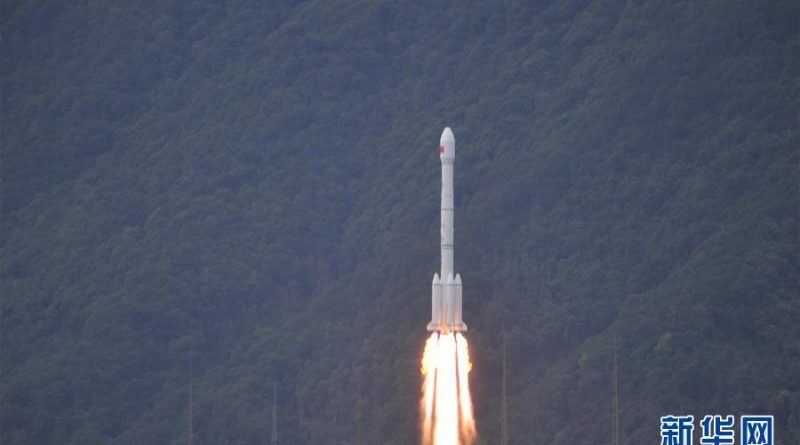China’s Long March 3B Lofts Shijian-13 Satellite to Test High-Throughput Communications & Ion Drive
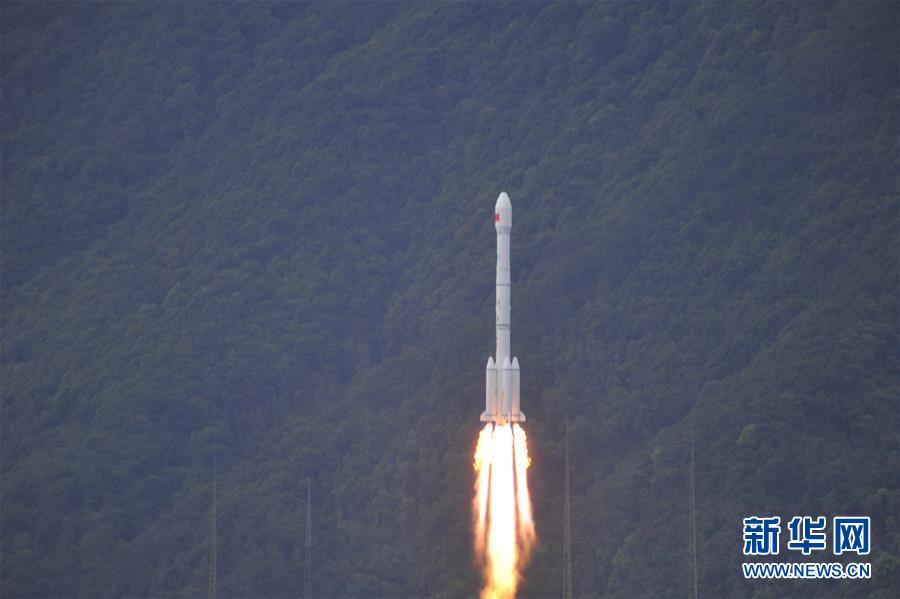
China’s Long March 3B rocket blasted off from the Xichang Satellite Launch Center on Wednesday, lifting into orbit the country’s first high-throughput communications satellite that is set for an experimental mission to test out electric propulsion and laser communications.
Lifting off from China’s Sichuan province at 11:04 UTC, 7:04 p.m. local time, Long March 3B was to turn to the south east to fly over the Chinese mainland before heading out over the Pacific Ocean for the standard half-hour ascent profile into a highly elliptical Geostationary Transfer Orbit. Official confirmation of launch success came forward through Chinese media around one hour after liftoff.
The 4,600-Kilogram satellite Long March 3B was carrying is known as Shijian-13 or ChinaSat-16 developed by the China Academy of Space Technology (CAST) and operated in a cooperation between CAST and communications provider ChinaSatcom. Shijian-13 was the original name of the satellite, flying under China’s space technology test program, while the ChinaSat-16 designation places it under the country’s state-controlled satellite communications program.
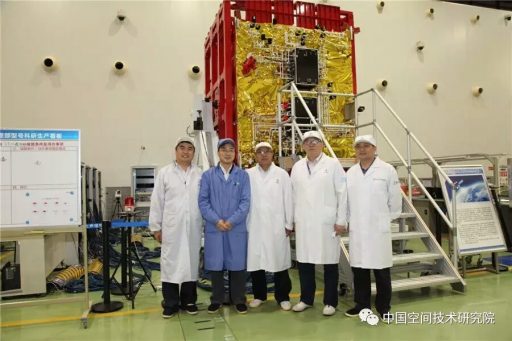
Shijian-13 carries the first high-throughput satellite (HTS) payload developed by China and it will test a new electric propulsion system for orbit-raising and stationkeeping in Geostationary Orbit.
The satellite hosts a broadband communications system operating in the Ka-Band frequency range and capable of a data throughput of 20gbps, making it the most powerful communications satellite sent into orbit by the Chinese. Shijian-13’s Ka-Band payload will provide 26 user beams covering the Chinese mainland and offshore areas, also delivering connectivity to airborne and maritime users as well as supporting emergency communications.
The satellite will deliver multimedia services and Internet connectivity with special focus on aeronautical services and China’s high-speed trains. Services delivered by the satellite will also be used for distance learning and telemedicine, connecting remote areas of the country.
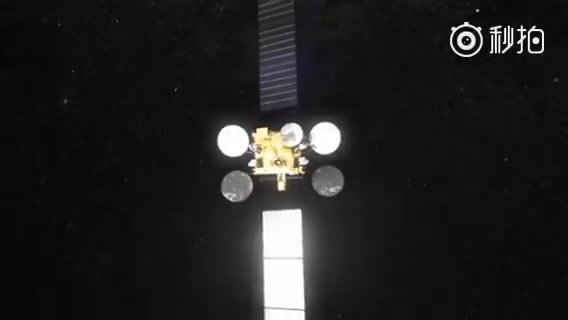
Shijian-13 will take up station at 110.5 degrees East from where it can cover the entire Chinese territory as well as the Asia-Pacific Region.
In addition to its HTS payload, Shijian-13 is hosting a new electric propulsion system centered around the LIPS-200 ion engine developed by the Lanzhou Institute of Physics and first flight-tested on the Shijian-9A satellite in 2012.
Ion engines employ a heavy atomic species, typically Xenon, that is ionized, accelerated in an electric field and expelled at extremely high velocity – allowing the system to operate extremely efficiently in terms of the impulse achieved. Compared to conventional chemical rocket engines, ion engine systems offer a tenfold increase in specific impulse, but only reach a fraction of the thrust – making them suitable for in-orbit maneuvers over an extended time period whereas chemical propulsion is used for large changes in velocity in a short time span.
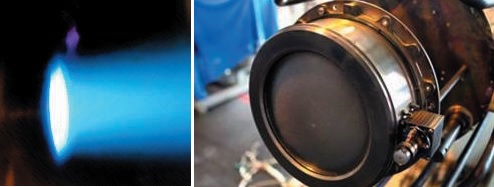
Electric propulsion systems have the major benefit of increasing the payload mass a satellite is carrying or decreasing launch costs through reduction of spacecraft mass.
The LIPS-200 propulsion system comprises the ion thruster itself, a power processing unit, electric-propulsion control unit, Xenon tank, pressure regulation & flow control unit and a line connection unit. The overall mass of the system is 36 Kilograms, excluding the Xenon propellant.
The LIPS-200 ion thruster delivers a nominal thrust of 40 millinewtons at a specific impulse of 3136 seconds, requiring 1,200 Watts of electrical power during operation. Ground testing validated the design parameters of the engine over a 7500-hour operation period, but flight testing over several years in the operational space environment is necessary before declaring the system fully operational.
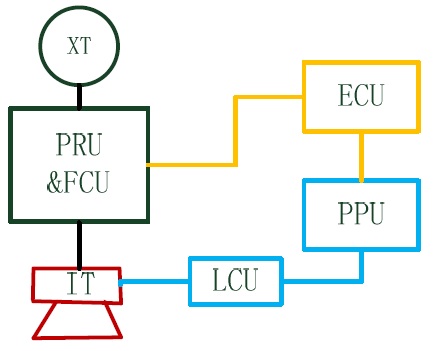
On the Shijian-13 mission, LIPS-200 will be primarily used for stationkeeping in Geostationary Orbit. Stationkeeping is necessary due to perturbations in the satellite’s orbit caused by gravitational influences from Earth as well as solar pressure which, in combination, cause a GEO satellite to drift in the East-West direction and induce a North-South motion that would eventually place the satellite into an inclined orbit. East-West stationkeeping only requires 1.3m/s of delta-v per year and is almost negligible in propellant consumption when using conventional thrusters, however, North-South stationkeeping (NSSK) requires around 50m/s per year.
China outlined a plan to employ electric propulsion for NSSK to fully certify the technology and understand its capabilities before implementing it in other areas such as transfer from LEO to GEO and deep space exploration.
No information is available on the laser communications terminal reportedly carried by Shijian-13. China made a number of developments in this area in recent years, specifically the inauguration of ultra-secure quantum communications that are completed via optical laser terminals. Extending this technology from Low Earth Orbit to Geostationary Orbit would mark a major accomplishment in the country’s continuing drive in the area of quantum computing and communications.
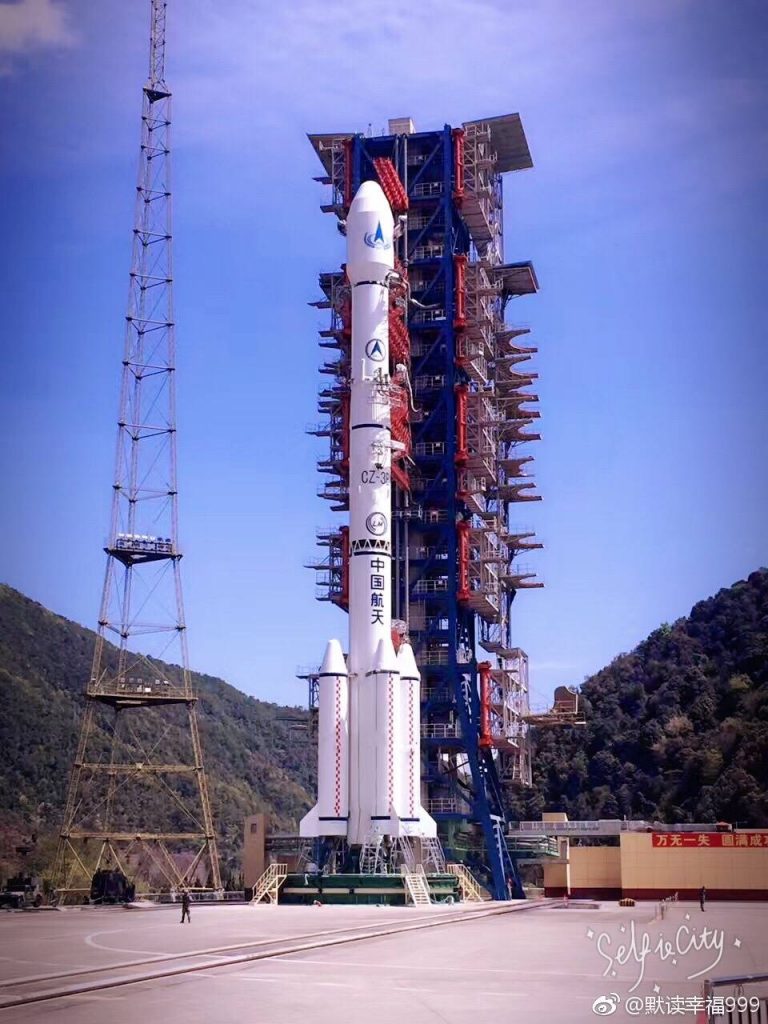
Shijian-13 is based on the upgraded DFH-3B satellite platform with a bus size of 2.2 by 2.0 by 3.1 meters, capable of hosting payloads in the 500kg range. The bus includes six principal subsystems to provide a stable platform for the payload with the bus in charge of power generation & distribution, propulsion, attitude determination and control, thermal control and data handling. The three-axis stabilized platform has a nominal end-of-life power supply of 1,700 Watts and a life expectancy of at least 15 years.
Tasked with launching the Shijian-13 satellite was the Long March 3B/G2 (Y43) launch vehicle, weighing in at 456,000 Kilograms and standing 56.33 meters tall with a core diameter of 3.35 meters. The rocket comprises four boosters and a three-stage stack with the lower stages consuming hypergolic propellants, Unsymmetrical Dimethylhydrazine and Nitrogen Tetroxide while the third stage uses cryogenic propellants, Liquid Hydrogen and Liquid Oxygen.
Long March 3 thundered off at 11:04 UTC with a thrust of 604 metric ton-force, rising into the skies over the Xichang launch base in the Sichuan province in south-western China. After a vertical ascent of a few seconds, the rocket began to pitch and roll onto its planned ascent path, taking it south-east across China before passing over the Pacific Ocean.
With all engines firing at full throttle, Long March 3B/E burned 2,350 Kilograms of propellant per second as it started racing uphill and making its way downrange, passing Mach 1 and encountering Maximum Aerodynamic Pressure. Each of the four boosters delivered 75,500 Kilogram-force of additional thrust to the vehicle using a single DaFY-5-1 engine. The boosters consumed their propellant load of 41,200kg, each, over the course of a burn of 140 seconds after which they dropped away from the three-stage rocket.
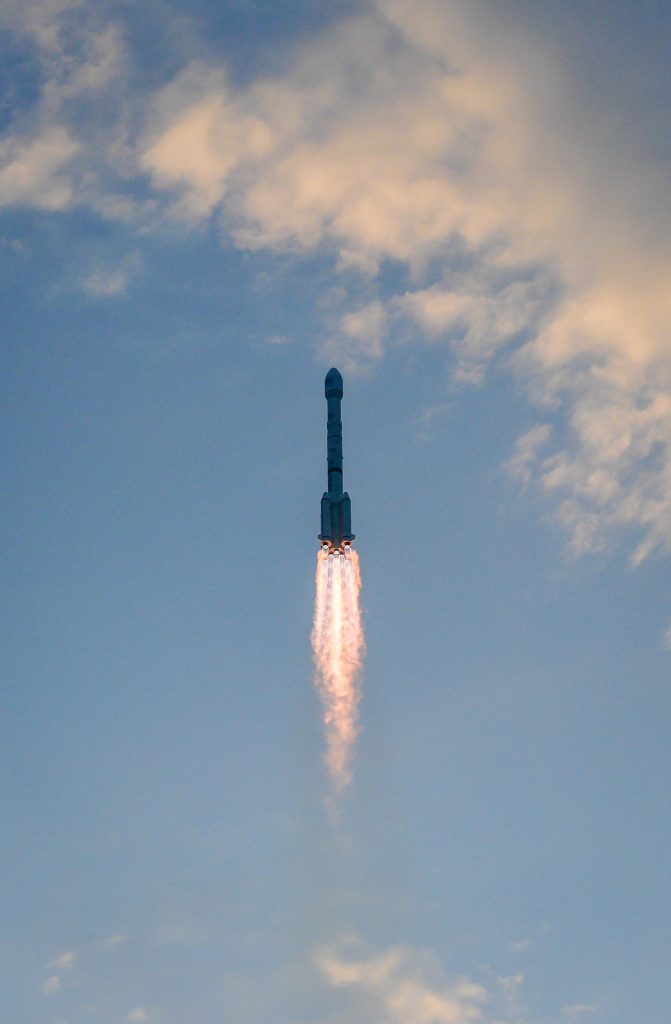
With the boosters gone, the Core Stage continued powering the vehicle using a DaFY-6-1 cluster of four engines delivering 302 metric tons of thrust. Overall, the 24.8-meter tall first stage launched with a propellant load of 186,200 Kilograms that was expended in two minutes and 38 seconds. Immediately after engine cutoff of the first stage, the second stage commanded its four-chamber vernier engine to ignite as part of the hot-staging sequence employed by the Long March 3B.
A series of 14 pyrotechnic bolts were fired to disconnect the first and second stage, allowing the second stage’s four-chamber vernier engine to move the stack away from the empty core with a thrust of five tons. Moments after staging, the second stage ignited its DaFY-20-1 main engine, soaring up to a full thrust of 75,660 Kilogram-force to continue powered ascent. Overall, the second stage launched with a propellant load of 49,400 Kilograms measuring 12.92 meters in length and 3.35 meters in diameter.
While the second stage was firing, Long March 3B departed the dense atmosphere, making it safe to jettison the protective payload fairing and expose the Shijian-13 satellite for the rest of its ride uphill.
The second stage performed a nominal burn of 178 seconds with the vernier engine burning about six seconds longer than the main engine. Immediately after shutdown, the pyrotechnic stage separation system was initiated and solid-fueled retrorockets moved the second stage away.
One second after staging, the 12.4-meter long third stage ignited its two cryogenic YF-75 engines, generating a total thrust of 16,000 Kilogram-force as part of its initial burn to accelerate the stack to orbital velocity in order to enter a Low Earth Parking Orbit.
The Low Earth Parking orbit, around 190 Kilometers in altitude, was reached after a third stage burn of around four minutes and 45 seconds, marking the start of a coast phase. The coast phase, nearly 11 minutes in duration, was set up to allow the stack to fly to a position where the second burn could be performed around the equator passage so that the high-point of the orbit would be placed over the equator.
This second burn lasted for approximately three minutes and 15 seconds and was followed by a variable velocity adjustment that involved the vernier engines of the third stage which continued to fire until the navigation platform sensed that the targeted injection velocity was achieved, thus optimizing the accuracy of the orbital insertion with spacecraft separation occurring approximately 26 minutes after launch.

